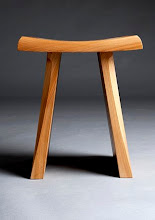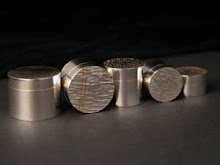
Here you are, sitting at a computer, reading about craft on the internet. You can't feel it's texture or temperature, walk around it to look at the back or lift it up to feel it's weight. You cant even smell it. It's all on a screen. So why are you here then? The internet has opened doors to all kinds of communities. We investigate it to find others we can relate to - those which inspire us – and it has grown to become all about sharing and contributing. But what does this mean for contemporary craft makers?
The rise of personalised blogs and websites may be encouraging individuals to become more creative with the net and in turn inspiring people to turn to crafts and produce amateur, home and hand-made art and objects. Websites such as Etsy have really brought the growing DIY ethic to the forefront. http://www.etsy.com Etsy was established in 2005 and it's mission is to ' enable people to make a living making things, and to reconnect makers with buyers. Our vision is to build a new economy and present a better choice: Buy, Sell, and Live Handmade.' The Etsy community spans the globe with buyers and sellers coming from more than 150 countries - Etsy sellers number in the hundreds of thousands
For Matthew Stinchcomb, a spokesman for Etsy where many crafters show and sell their wares, this is one of the factors that has encouraged huge numbers of people to plunge in and have a go themselves.
"It's easier for people to be artists nowadays, you do not need to be able to draw. You can use Photoshop or software like that," he said. "You do not need to spend six years as an apprentice."

Craft really is the new cool on the net. Just look at growing groups such as the Craft Mafia where they proclaim themselves as the 'newest addition to the craft family' and are 'crafters on a mission to promote craft and creativity'.
The Craft Mafia members produce a range of handmade products such as jewellery, homewares, art, stationery and fashion and interior accessories and sell them from their respective websites, Etsy shops and at Craft Mafia Markets. 'We want to show you an alternative to the high street, which often fails to deliver the quality, unique handmade products that shoppers long for.'
Times are tough for everyone and the growth in the number of customers contacting artists directly once they have seen their work in exhibitions might understandably make galleries a little twitchy. Direct client contact can have both positive and negative aspects for the maker. Dealing with lengthy enquiries over e-mail can be frustrating when they come to nothing and difficult customers can really sap your time. This is when we realise what galleries are for. Conversely, meeting with your customers can have various benefits – no commission is taken, you can gain valuable feedback and the customer also feels they have a more interesting buying experience when they commission a piece directly from the artist.
I personally have a website but I do not have an e-commerce section on it. My work is not batch produced and I feel that people really need to hold it and in the case of jewellery, try it on. I have heard conflicting opinions about selling websites - Are these sites viable and successful or are they just too complicated and mean more time away from the studio for the maker?
Looking at the growth of 'crafting' on the net makes me pose some questions:
Is e-commerce really applicable to the specific needs of selling and purchasing craft?
How should we curate and critically comment on the digitally connected crafts?
What implications does all this have for "fine craft", and how does it change the culture of consuming such craft?
How should we as professional makers regard the democratic rise of DIY creativity?







No comments:
Post a Comment